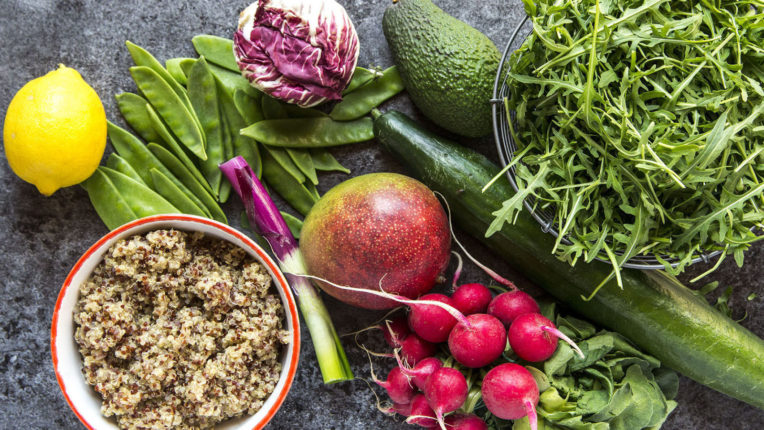Ketogenic diets, sometimes referred to as keto weight loss plans, have become increasingly popular in recent years. These diets may even help dieters to burn fat 10 times faster than those on a standard diet, according to a study reported in Diabetes & Metabolic Syndrome.
If you’re a vegan, however, you may wonder whether a diet some refer to the “all the butter, bacon, and steak you can eat” food plan can work for you. We’ve got the skinny here on the vegan way of keto diets.
What Does It Mean To Go Keto?
Before you start planning out your vegan version of a keto diet, it’s important to understand what’s involved in following a ketogenic food plan. Keto diets focus on cutting carbohydrates, boosting fat intake, and eating a moderate amount of protein.
The goal is to go into ketosis, which causes your body to burn fat for energy, according to Women’s Health.There are three main reasons for weight loss on a ketogenic diet:
- Carbohydrates cause your body to hold onto water. Cutting out the carbs, as you do on a keto diet, eliminates that water weight.
- Craving carbohydrates can make you overeat, but it’s less common to crave fat, making you less apt to binge.
- Ketosis encourages your body to burn fat.
What Do Vegans Eat On Ketogenic Diets?
While animal protein eaters can head to the nearest steakhouse and load up, it can be a tad trickier to follow a ketogenic diet when you’re vegan. However, points out Ruled.Me, it can be done as long as you emphasize plant-based fats, supplement with certain nutrients, and eat lots of low-carb vegetables.
Make your keto diet shopping list based on these categories:
- High-fat vegan versions of dairy foods, such as coconut cream and vegan cheese
- Nuts ranging from almonds to cashews
- Seeds such as sunflower and pumpkin
- Low-carb, high protein versions of animal protein, such as tofu and tempeh
- Low-carb vegetables, from cauliflower to zucchini to mushrooms to romaine lettuce
- Fats ranging from olive oil to coconut oil
- Low-carb fruits such as avocado and raspberries
What Do Vegans Need To Avoid On a Keto Diet?
Traditional vegan diets include plenty of grains, legumes, fruit, and starchy foods such as yams and potatoes. But a vegan keto dieter needs to avoid almost all of those foods in the quest to cut carbohydrates.
Clean out your cupboard and give away or stash:
- Flour-based foods such as crackers, bread, and cereal
- Foods containing grains such as corn and rice
- Legumes such as lentils
- Most fruits, such as bananas, cherries, and apples
- Sugar, including molasses, honey, and agave
What Are The Benefits Of A Keto Diet?
Researchers have found that ketogenic diets may help with concerns ranging from diabetes to acne to obesity, according to Dr. Axe. The diet causes your body to burn fat for energy by boosting your intake of fat and protein. As for those delicious but unhealthy carbohydrates such as cookies and cake? They’re not allowed on ketogenic diets.
In addition, ketogenic diets may be the solution for those who have problems with sticking to a diet because they’re hungry. The higher levels of fat and protein in keto diets can help to reduce cravings.
How Much Protein, Fat, And Carbohydrates Should You Eat?
Whether you’re counting calories, carbohydrates, or fat grams, diets work only if you follow the guidelines. In the case of ketogenic diets, the main rules focus on calculating the percentages of the main keto diet food groups:
- On a strict keto diet, aim to eat 75 percent of your calories from fat, 20 percent from protein, and 5 percent from carbohydrates
- On a modified keto diet, aim for 40 percent of your calories from fat, 30 percent from protein, and 30 percent from carbohydrates
Before You Start: Before you start any new diet or exercise plan, make time to talk with your healthcare provider about the healthiest option for you.



